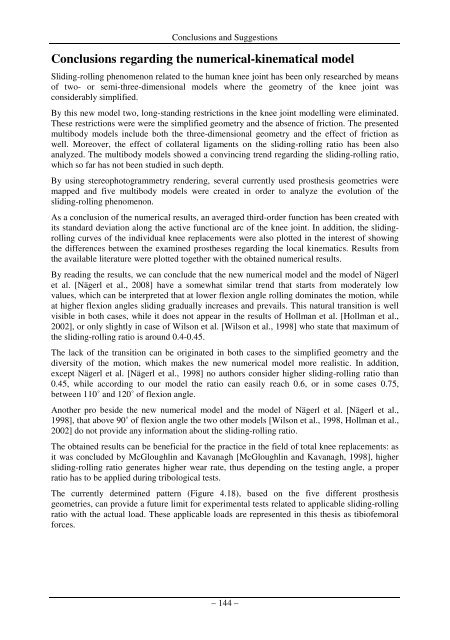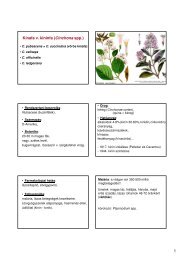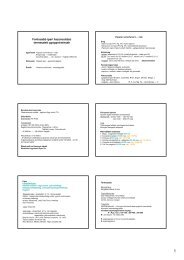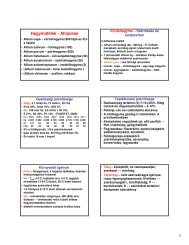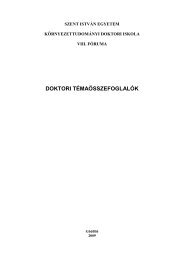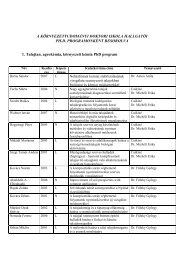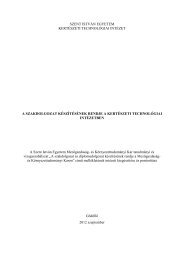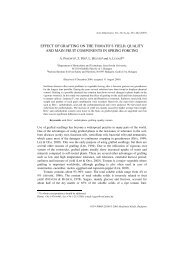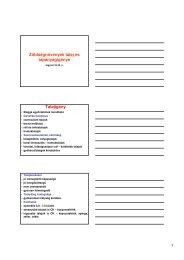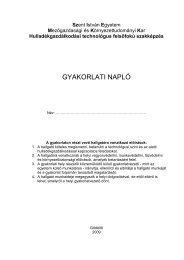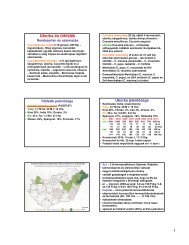PhD Fekete - SZIE version - 2.2 - Szent István Egyetem
PhD Fekete - SZIE version - 2.2 - Szent István Egyetem
PhD Fekete - SZIE version - 2.2 - Szent István Egyetem
You also want an ePaper? Increase the reach of your titles
YUMPU automatically turns print PDFs into web optimized ePapers that Google loves.
Conclusions and Suggestions<br />
Conclusions regarding the numerical-kinematical model<br />
Sliding-rolling phenomenon related to the human knee joint has been only researched by means<br />
of two- or semi-three-dimensional models where the geometry of the knee joint was<br />
considerably simplified.<br />
By this new model two, long-standing restrictions in the knee joint modelling were eliminated.<br />
These restrictions were were the simplified geometry and the absence of friction. The presented<br />
multibody models include both the three-dimensional geometry and the effect of friction as<br />
well. Moreover, the effect of collateral ligaments on the sliding-rolling ratio has been also<br />
analyzed. The multibody models showed a convincing trend regarding the sliding-rolling ratio,<br />
which so far has not been studied in such depth.<br />
By using stereophotogrammetry rendering, several currently used prosthesis geometries were<br />
mapped and five multibody models were created in order to analyze the evolution of the<br />
sliding-rolling phenomenon.<br />
As a conclusion of the numerical results, an averaged third-order function has been created with<br />
its standard deviation along the active functional arc of the knee joint. In addition, the slidingrolling<br />
curves of the individual knee replacements were also plotted in the interest of showing<br />
the differences between the examined prostheses regarding the local kinematics. Results from<br />
the available literature were plotted together with the obtained numerical results.<br />
By reading the results, we can conclude that the new numerical model and the model of Nägerl<br />
et al. [Nägerl et al., 2008] have a somewhat similar trend that starts from moderately low<br />
values, which can be interpreted that at lower flexion angle rolling dominates the motion, while<br />
at higher flexion angles sliding gradually increases and prevails. This natural transition is well<br />
visible in both cases, while it does not appear in the results of Hollman et al. [Hollman et al.,<br />
2002], or only slightly in case of Wilson et al. [Wilson et al., 1998] who state that maximum of<br />
the sliding-rolling ratio is around 0.4-0.45.<br />
The lack of the transition can be originated in both cases to the simplified geometry and the<br />
diversity of the motion, which makes the new numerical model more realistic. In addition,<br />
except Nägerl et al. [Nägerl et al., 1998] no authors consider higher sliding-rolling ratio than<br />
0.45, while according to our model the ratio can easily reach 0.6, or in some cases 0.75,<br />
between 110˚ and 120˚ of flexion angle.<br />
Another pro beside the new numerical model and the model of Nägerl et al. [Nägerl et al.,<br />
1998], that above 90˚ of flexion angle the two other models [Wilson et al., 1998, Hollman et al.,<br />
2002] do not provide any information about the sliding-rolling ratio.<br />
The obtained results can be beneficial for the practice in the field of total knee replacements: as<br />
it was concluded by McGloughlin and Kavanagh [McGloughlin and Kavanagh, 1998], higher<br />
sliding-rolling ratio generates higher wear rate, thus depending on the testing angle, a proper<br />
ratio has to be applied during tribological tests.<br />
The currently determined pattern (Figure 4.18), based on the five different prosthesis<br />
geometries, can provide a future limit for experimental tests related to applicable sliding-rolling<br />
ratio with the actual load. These applicable loads are represented in this thesis as tibiofemoral<br />
forces.<br />
– 144 –


